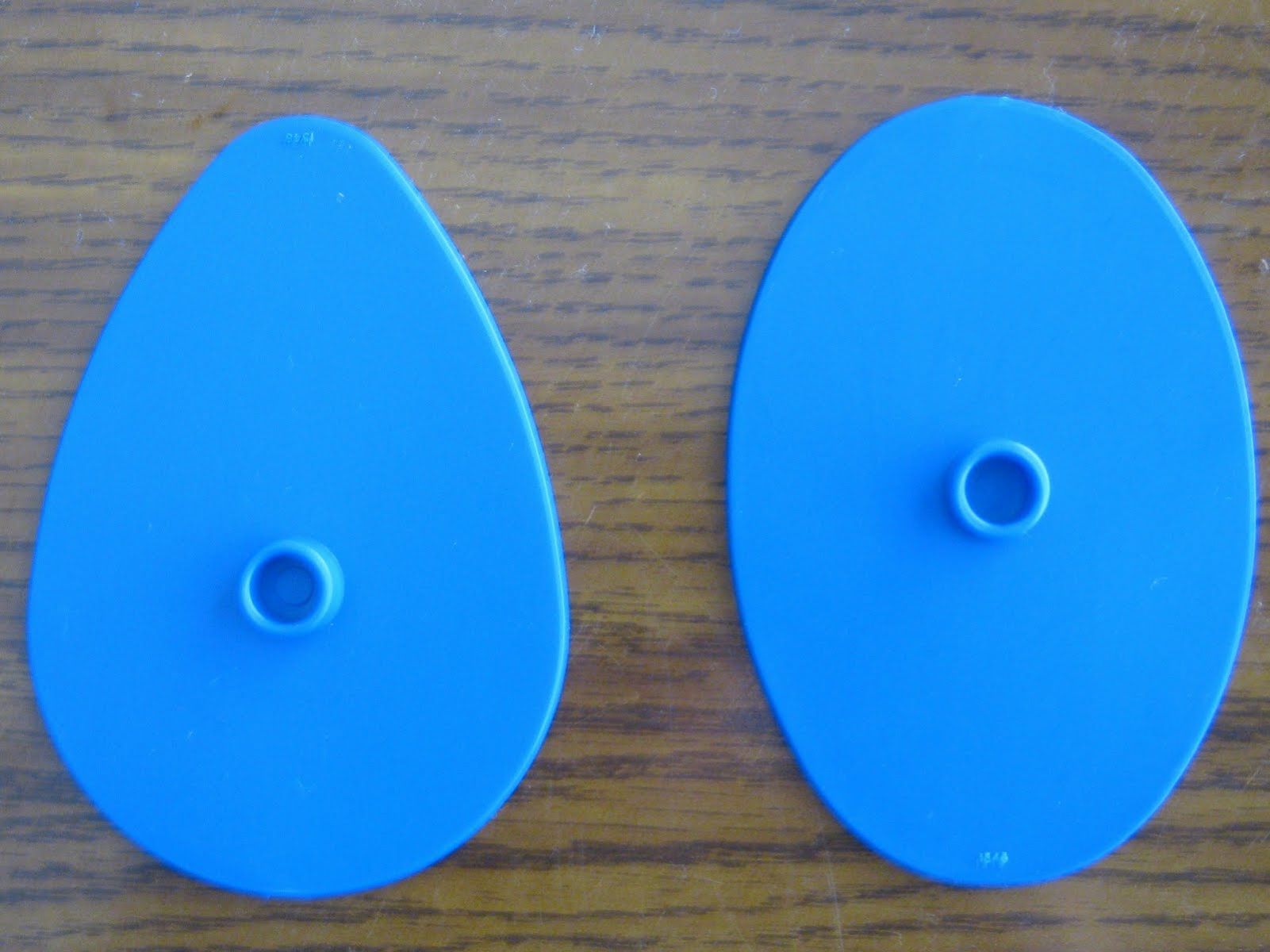Home>Mathematics>Unveiling The Hidden Distinctions: Ellipse Vs Oval – Which Shape Reigns Supreme?


Mathematics
Unveiling The Hidden Distinctions: Ellipse Vs Oval – Which Shape Reigns Supreme?
Published: February 20, 2024
Discover the nuances between ellipse and oval shapes in mathematics. Uncover which shape holds dominance in this intriguing comparison.
(Many of the links in this article redirect to a specific reviewed product. Your purchase of these products through affiliate links helps to generate commission for Regretless.com, at no extra cost. Learn more)
Table of Contents
Introduction
The world of shapes is a fascinating realm, filled with captivating forms that adorn our surroundings and captivate our imagination. Among these shapes, the ellipse and the oval stand out as intriguing figures that often spark curiosity and contemplation. While these two shapes may appear similar at first glance, a closer examination reveals distinct characteristics that set them apart. In this article, we embark on a journey to unravel the hidden distinctions between the ellipse and the oval, shedding light on their unique attributes and exploring their individual significance in various contexts.
As we delve into the realm of geometry, we encounter the ellipse, a shape renowned for its symmetrical elegance and mathematical precision. Alongside the ellipse, we encounter the oval, a shape that exudes a sense of fluidity and organic curvature. Despite their visual resemblance, these two shapes possess defining traits that differentiate them in terms of mathematical properties, geometric construction, and practical applications.
Through this exploration, we aim to unveil the inherent beauty and structural nuances of the ellipse and the oval, shedding light on their roles in art, architecture, engineering, and beyond. By understanding the distinctive features of these shapes, we gain a deeper appreciation for their aesthetic allure and functional versatility. Join us as we embark on a captivating journey to discern the subtle yet significant disparities between the ellipse and the oval, unraveling the mysteries that lie within their graceful contours and intricate proportions.
Read more: US Vs UK Shameless: Which Reigns Supreme?
Definition of Ellipse
An ellipse is a closed curve that is symmetric about its center. It is characterized by two distinct foci, which are points within the shape that dictate its overall form. The sum of the distances from any point on the ellipse to the two foci remains constant, a property known as the focal property. This unique attribute distinguishes the ellipse from other shapes and contributes to its mathematical significance.
In mathematical terms, an ellipse can be defined as the set of all points where the sum of the distances to two fixed points (the foci) is constant. This fundamental definition serves as the cornerstone for understanding the geometric properties and equations associated with ellipses. The shape of an ellipse can vary based on the relative distances between the foci and the overall dimensions of the curve, allowing for a diverse range of elliptical forms to exist within the realm of geometry.
Furthermore, the ellipse possesses a major axis and a minor axis, which are perpendicular line segments that intersect at the center of the ellipse. The length of these axes determines the overall size and proportions of the ellipse, influencing its visual appearance and mathematical properties. Through the interplay of these defining elements, the ellipse emerges as a versatile and captivating shape that finds applications in various fields, from astronomy and physics to art and design.
In essence, the ellipse embodies a harmonious balance of symmetry and mathematical precision, making it a compelling subject of study and admiration. Its elegant curvature and inherent geometric properties render it a cornerstone of mathematical discourse and a source of inspiration for creative endeavors. As we unravel the intricacies of the ellipse, we gain a deeper appreciation for its profound influence on the realms of mathematics, science, and aesthetics.
Definition of Oval
An oval is a geometric shape that shares similarities with the ellipse, yet possesses distinct characteristics that set it apart. Unlike the ellipse, which is defined by two foci and maintains a constant sum of distances from any point on the curve to these foci, the oval lacks such a precise definition. Instead, the oval is often described as a rounded or elongated shape that does not adhere to the strict mathematical properties of an ellipse. This inherent flexibility in defining an oval allows for a broader interpretation of its form, encompassing a wide range of shapes that exhibit curved, symmetrical contours.
In essence, an oval can be visualized as a shape that combines elements of circularity and elongation, resulting in a form that exudes a sense of fluidity and organic curvature. While the ellipse adheres to specific mathematical equations and focal properties, the oval embraces a more open-ended and versatile nature, making it a shape that defies rigid classification. This characteristic fluidity grants the oval a unique aesthetic appeal, as it can manifest in various proportions and configurations, offering a diverse array of visual expressions.
In practical terms, the oval often finds its place in art, design, and architecture, where its gentle curves and adaptable nature allow for creative exploration and artistic interpretation. From the graceful contours of oval-shaped windows to the organic silhouettes of oval paintings and sculptures, this shape lends itself to a wide spectrum of artistic endeavors, infusing spaces and compositions with a sense of harmony and dynamism.
Furthermore, the oval's presence extends beyond the realms of art and design, permeating fields such as engineering and industrial design. Its versatile form makes it well-suited for applications in product design, where ergonomic considerations and visual appeal converge to create objects that seamlessly integrate into the human environment. Whether in the design of consumer electronics, furniture, or automotive components, the oval's adaptable form offers designers and engineers a canvas for innovation and creativity.
In essence, the oval embodies a sense of organic elegance and adaptability, transcending the confines of strict mathematical definitions to embrace a realm of artistic expression and functional versatility. Its fluid contours and graceful proportions make it a captivating shape that continues to inspire and enrich various domains, serving as a testament to the enduring allure of geometric forms in the tapestry of human creativity and ingenuity.
Key Differences Between Ellipse and Oval
The key differences between the ellipse and the oval lie in their defining characteristics, geometric properties, and mathematical representations. While these two shapes may share visual similarities, a closer examination reveals distinct attributes that set them apart.
Mathematical Definition:
The fundamental disparity between the ellipse and the oval stems from their mathematical definitions. An ellipse is precisely defined as the set of all points where the sum of the distances to two fixed foci is constant. This strict mathematical definition underpins the symmetrical elegance and precise geometric properties of the ellipse. In contrast, the oval lacks such a precise mathematical definition, allowing for a broader interpretation of its form. This inherent flexibility grants the oval a more fluid and adaptable nature, diverging from the stringent mathematical constraints that govern the ellipse.
Focal Properties:
Another crucial distinction lies in the focal properties of these shapes. The ellipse is characterized by two distinct foci, which dictate its overall form and contribute to its symmetrical structure. The sum of the distances from any point on the ellipse to the two foci remains constant, a defining feature that sets it apart from other shapes. In contrast, the oval does not adhere to the focal properties of an ellipse, lacking a consistent focal structure. This deviation from the focal properties of an ellipse underscores the oval's divergence from precise mathematical constraints, allowing for a more varied and organic expression of form.
Symmetry and Proportions:
The symmetry and proportions of the ellipse and the oval also exhibit notable disparities. The ellipse embodies a balanced and precisely defined symmetry, characterized by a major axis and a minor axis that intersect at its center. This symmetrical precision contributes to the ellipse's mathematical elegance and geometric harmony. On the other hand, the oval embraces a more organic and adaptable symmetry, often lacking the precise proportions and focal symmetry of an ellipse. Its elongated and rounded contours allow for a diverse range of proportions and configurations, resulting in a shape that exudes fluidity and dynamism.
Practical Applications:
In practical terms, the differences between the ellipse and the oval manifest in their applications across various domains. The precise geometric properties of the ellipse find resonance in fields such as astronomy, physics, and engineering, where its focal properties and symmetrical elegance play a pivotal role. Conversely, the oval's adaptable and fluid nature lends itself to artistic and design-oriented applications, where its organic contours and versatile proportions offer a canvas for creative expression and ergonomic considerations.
In essence, the key differences between the ellipse and the oval encompass their mathematical definitions, focal properties, symmetry, and practical applications. While the ellipse embodies precision and symmetrical elegance, the oval embraces adaptability and organic fluidity, resulting in two distinct shapes that enrich the tapestry of geometric forms with their unique attributes and expressive potential.
Applications of Ellipse and Oval
The applications of the ellipse and the oval span a diverse array of fields, each harnessing the unique attributes of these shapes to fulfill specific functions and evoke aesthetic appeal. From the realms of art and design to the domains of engineering and mathematics, the ellipse and the oval find resonance in a multitude of contexts, leaving an indelible mark on the fabric of human creativity and innovation.
Applications of Ellipse
The precise geometric properties and symmetrical elegance of the ellipse render it indispensable in various disciplines. In astronomy, the orbits of celestial bodies often conform to elliptical paths, a testament to the fundamental role of ellipses in describing the motion of planets, comets, and satellites. The focal properties of an ellipse also find application in optics, where the design of lenses and mirrors leverages the symmetrical curvature of ellipses to manipulate light and enhance visual perception.
In the realm of engineering, the elliptical shape serves as a foundational element in the design of gears, cams, and linkages, where its precise geometry facilitates smooth and efficient mechanical motion. The application of ellipses extends to architecture, where the graceful curvature of elliptical arches and vaults imparts structural stability and aesthetic grandeur to buildings and monuments.
Furthermore, the mathematical elegance of the ellipse permeates the realm of art and design, inspiring creations that embody a harmonious balance of form and function. From the graceful contours of elliptical sculptures to the captivating allure of elliptical patterns in textiles and decorative motifs, this shape serves as a wellspring of artistic expression and visual intrigue.
Applications of Oval
The adaptable and organic nature of the oval lends itself to a myriad of applications, particularly in the realms of art, design, and ergonomics. In architecture, the use of oval windows and apertures infuses spaces with a sense of fluidity and visual dynamism, creating a harmonious interplay of light and form. The oval's ergonomic appeal extends to product design, where the contours of consumer electronics, furniture, and automotive components often embrace the gentle curvature of ovals to enhance user experience and aesthetic appeal.
Artistically, the oval serves as a canvas for creative exploration, inspiring compositions that exude a sense of organic elegance and rhythmic flow. From oval-shaped canvases that invite innovative artistic expressions to sculptural forms that embody the fluidity of natural contours, the oval emerges as a versatile and evocative shape that transcends rigid conventions and invites imaginative interpretation.
In summary, the applications of the ellipse and the oval encompass a rich tapestry of disciplines, each harnessing the distinctive attributes of these shapes to enrich the human experience and advance the frontiers of creativity and innovation. Whether in the precision of mathematical equations, the fluidity of artistic compositions, or the ergonomic considerations of design, the ellipse and the oval stand as enduring symbols of geometric beauty and functional versatility.
Conclusion
In conclusion, the exploration of the ellipse and the oval has unveiled a rich tapestry of geometric intricacies and practical applications, shedding light on the nuanced distinctions that define these captivating shapes. From the symmetrical elegance of the ellipse to the organic fluidity of the oval, each shape embodies a unique blend of mathematical precision, aesthetic allure, and functional versatility.
The ellipse, with its precise focal properties and symmetrical proportions, finds resonance in disciplines such as astronomy, optics, engineering, and art, where its geometric elegance serves as a cornerstone of creative expression and scientific inquiry. Its role in describing celestial orbits, manipulating light in optical systems, and inspiring architectural and artistic endeavors underscores the enduring significance of the ellipse in shaping human understanding and creativity.
On the other hand, the oval's adaptable nature and ergonomic appeal permeate diverse domains, from architecture and product design to artistic exploration. Its gentle curves and versatile proportions offer a canvas for innovative design solutions and artistic interpretations, enriching spaces, objects, and compositions with a sense of organic elegance and visual dynamism.
As we reflect on the distinctive attributes and applications of the ellipse and the oval, we gain a deeper appreciation for the profound impact of geometric forms on the human experience. These shapes transcend mere mathematical constructs, weaving themselves into the fabric of art, design, engineering, and scientific inquiry, where their expressive potential and functional utility converge to enrich our lives and expand the boundaries of human ingenuity.
In essence, the ellipse and the oval stand as testaments to the enduring allure of geometric beauty and the boundless creativity it inspires. Their presence in the realms of science, art, and design serves as a reminder of the intrinsic harmony between mathematical precision and artistic expression, inviting us to embrace the symmetrical elegance of the ellipse and the organic fluidity of the oval as timeless sources of inspiration and innovation.













